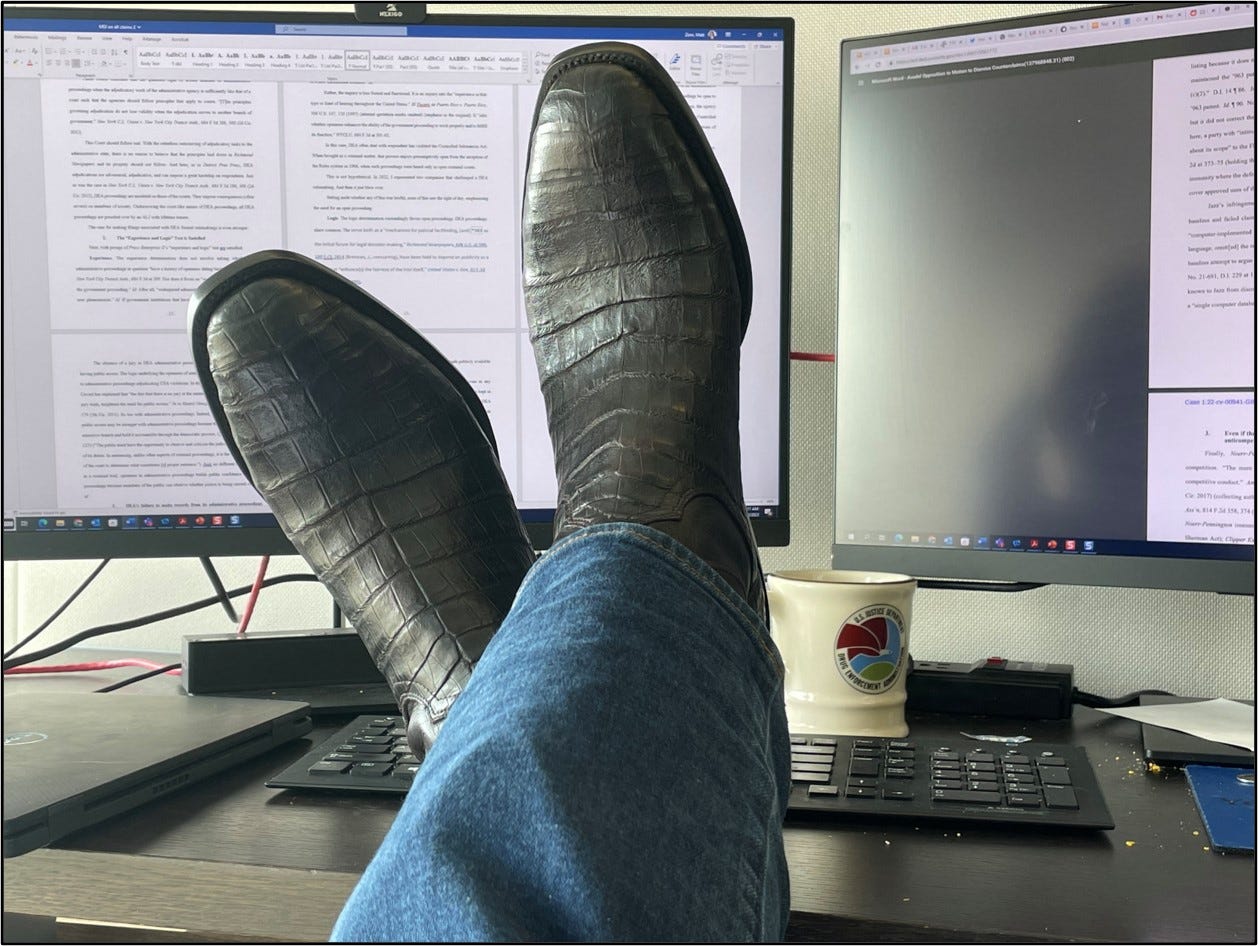In Parts 1 and 2, I laid out the trajectory of GHB: from a research substance to unapproved bodybuilding supplement to date rape drug to cash cow Orphan Drug. My thesis is that this progression has far more to do with the regulatory system than patents.
For those who read to the end of Part 2, I disclosed in Footnote 11 “a small position in Avadel because, having read the briefs, I’m betting it wins.” Well, last Friday, it did. The Federal Circuit resolved Jazz’s appeal against Jazz, just as I predicted.
Before I discuss the court decision, let me take a step back. Why should you care?
Psychedelic REMS
The current “psychedelic renaissance” centers on medicalizing Schedule I substances, for example, psilocybin. If a pharmaceutical product comprising a Schedule I substances is approved by FDA, DEA must, at minimum, reschedule the pharmaceutical product. Under current practice, the underlying substance is not rescheduled. So if MAPS MDMA is approved and rescheduled, MDMA itself may not be rescheduled. This is called bifurcated scheduling.
The origins of bifurcated scheduling are unclear. In 1986, DEA rescheduled “dronabinol pharmaceutical products,” leaving the broader class of synthetic THC behind. I’m not sure bifurcated scheduling is lawful; it hasn’t ever been challenged. It is one of those things that has become accepted as fact because nobody has ever even bothered to force the question. In any event, as discussed in Part 1, GHB is bifurcated scheduling with a twist: done by Congress, not DEA. That is definitely lawful.
Schedule I substances also carry a self-fulfilling prophecy. Dangerous or not, they are viewed as such. Just read the briefs and opinions in the Avadel case. All assumed GHB is highly dangerous because it is in Schedule I. Given the stigma associated with a Schedule I classification, that FDA required a REMS when it approved Xyrem should surprise no one.1
If a pharmaceutical product is rescheduled—but the substance is left behind in Schedule I—one is left with a weird situation. It becomes easier to research and develop the pharmaceutical product than the underlying substance. And, that pharmaceutical product may be subject to distribution-restrictions under a REMS, raising a whole host of other issues.
Psychedelic medicines approved by FDA will almost certainly follow the same trajectory. Look no further than esketamine/Spravato. Has a REMS. The FDA-required REMS makes Spravato only available through a restricted distribution program and requires certifications to prevent “misuse, abuse, serious adverse outcomes from dissociation and sedation.”2 The question isn’t whether there will be REMS in psychedelic medicine, but what will those REMS be?
All this applies to some non-Schedule I psychedelic compounds as well. For example, expect REMS for “novel” unscheduled psychedelic molecules, such as Mindset’s patented isoprocin glutarate that Field Trip/Reunion Biosciences charitably researches for them.
[Aside: When asked “what distinguishes Reunion Neuroscience from competitors in the space,” Reunion’s Chief Science Officer answered: “We wanted a molecule that had intellectual property because it’s the best way to get partners and the best way to own your future.” I’m guessing he didn’t mean a molecule covered by IP owned by others. Nice work, chaps.]
The Federal Circuit Decision
The opinion itself is short and easily dispatches Jazz’s arguments. This is because, as discussed in Part 2, they were bad. Ultimately, the decision rests on two core points.
The Jazz REMS patent claims a system, and a system is not a method. That the claimed systems can be used in the course of treating patients does not change the fact that the claims are system claims that recite components. (Page 10)
A system is not an “an approved method of using the drug.” “Conditions of use” does not expand the meaning of “method of using the drug.” And the fact that the REMS patent may cover a condition of using Xyrem does not change the fact that the patent claims do not recite a method of using Xyrem. (Pages 11-12)
Maybe I’m reading too much into the following paragraph, but it also seems the court had a dim view of the situation as a whole:
In December 2020, Avadel submitted an NDA for GHB based drug FT218, along with amendments pursuant to § 505(b)(2) and a proposed REMS. Unlike Xyrem, which requires the patient to wake up a few hours into the night to ingest a second dose, FT218 is dosed once nightly. Decision at *1. FT218’s REMS also uses multiple pharmacies and databases for ensuring proper drug handling. Despite these differences, and the fact that Avadel had filed an NDA, not an ANDA, the FDA required Avadel to file a certification regarding the ’963 patent’s single-pharmacy system.
With the decision, Avadel is now free to get its once-nightly product on the market. But the Jazz v. Avadel party ain’tover. Indeed, it just started.





